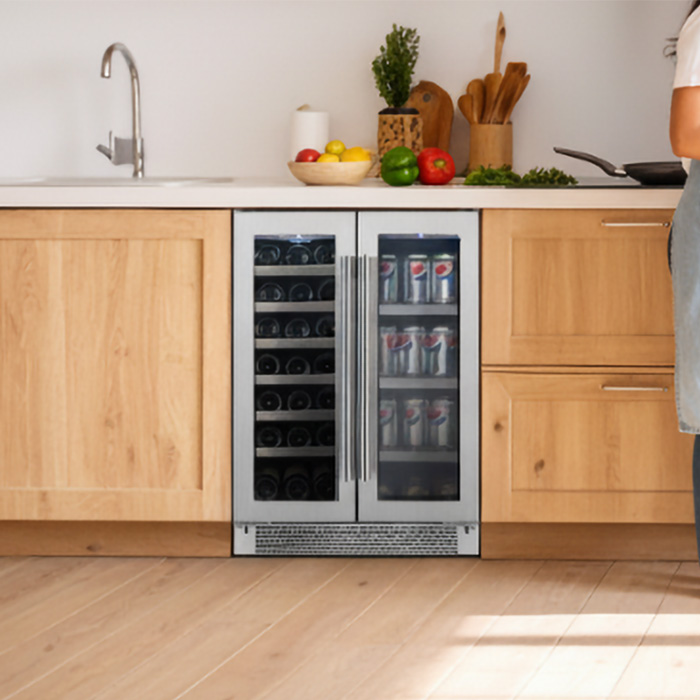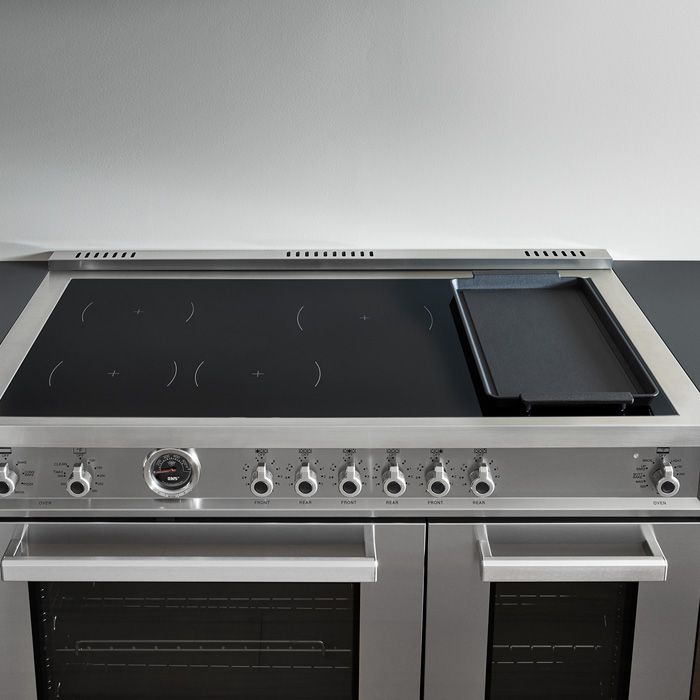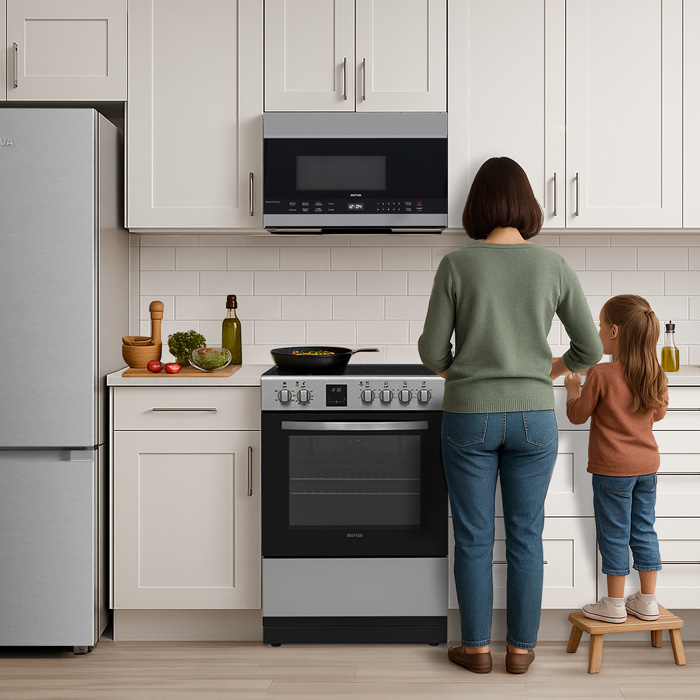
LOVE IT! Raise a glass to precise cuisine thanks to Bertazzoni…
02/07/2019
It’s not that easy being Green. But eco-responsible appliances can sure help.
03/09/2019“Bertazzoni gets the highest score across 138 luxury home brands”
Forbes, 2 July, 2019
Well, that’s no surprise to us!
With their stand out style, Bertazzoni gas ranges certainly do make a great impression. But there’s so much more to them than what first meets the eye. It’s the features that might not be immediately obvious that really make a difference.
The answer actually relates to basic cooking techniques that all cooks and chefs learn.
With their stand out style, Bertazzoni gas ranges certainly do make a great impression. But there’s so much more to them than what first meets the eye. It’s the features that might not be immediately obvious that really make a difference.
What exactly would make home cooks and chefs alike fall head over heels for a gas range?
(Hint: It’s not necessarily all about brute BTU* force!)The answer actually relates to basic cooking techniques that all cooks and chefs learn.
Many traditional recipes and cuisines were developed over centuries in regions where home cooks had to get as much satisfying flavour as possible with whatever (or what little) they had at hand. As a result, they developed techniques and recipes that allow flavours to “marry” perfectly.
Just think. Imagine you’re living at the turn of the last century, and you have to feed your family with what you grew with your own hands or bought at the market with your hard earned cash. God forbid you should scorch or burn any of that precious produce.
Just think. Imagine you’re living at the turn of the last century, and you have to feed your family with what you grew with your own hands or bought at the market with your hard earned cash. God forbid you should scorch or burn any of that precious produce.
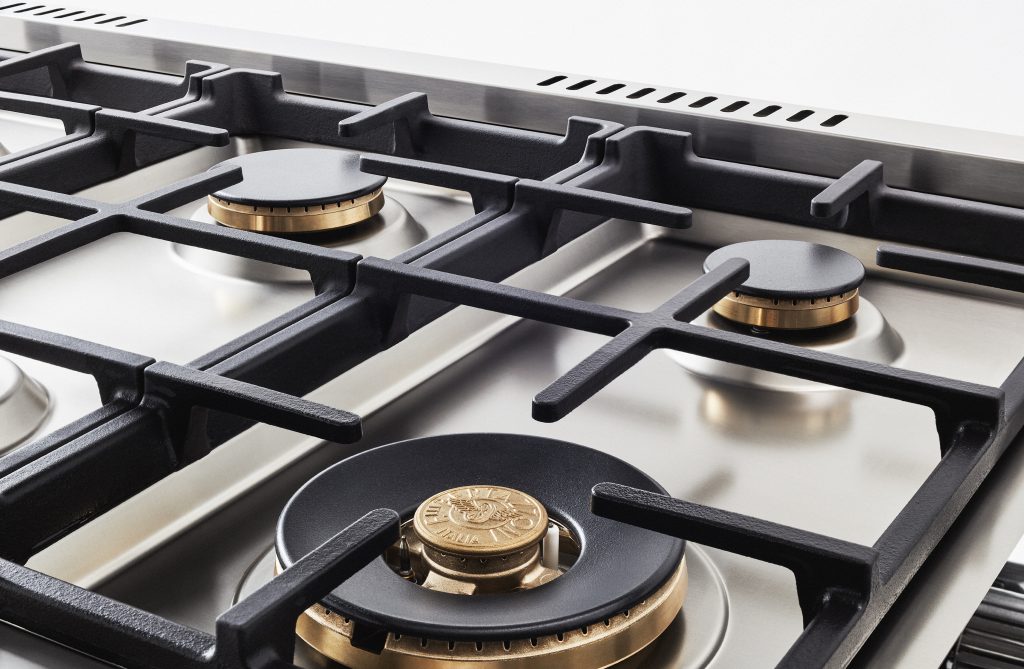
I’m specialized in baking. That’s exactly the world Bertazzoni ranges originated in, back in 1882 in Italy. There, as in many places in the world, a whole cuisine developed over centuries to make the most out of every piece of meat, every vegetable and fruit –- as well of course, as every type of pasta! (In fact, in Italy, even odd leftover scraps of pasta dough, know as maltagliati, are prepared lovingly in beautifully satisfying dishes like this one).
With classic braising techniques used for less expensive cuts of meat (which, when slow cooked, are actually more flavourful than costlier cuts) or gently simmered dishes that produce fantastic textures and savoury flavours from very simple ingredients (like this great Italian risotto) controlling heat — and sometimes a very low heat — is the name of the game.
The point is, no matter what you’re cooking on your range, control is what you’re looking for.
With classic braising techniques used for less expensive cuts of meat (which, when slow cooked, are actually more flavourful than costlier cuts) or gently simmered dishes that produce fantastic textures and savoury flavours from very simple ingredients (like this great Italian risotto) controlling heat — and sometimes a very low heat — is the name of the game.
The point is, no matter what you’re cooking on your range, control is what you’re looking for.
Great cuisine and great cooks demand one thing in particular: Control.
Since Bertazzoni has always understood that for cooks, control is everything, their ranges always provide a variety of burner sizes.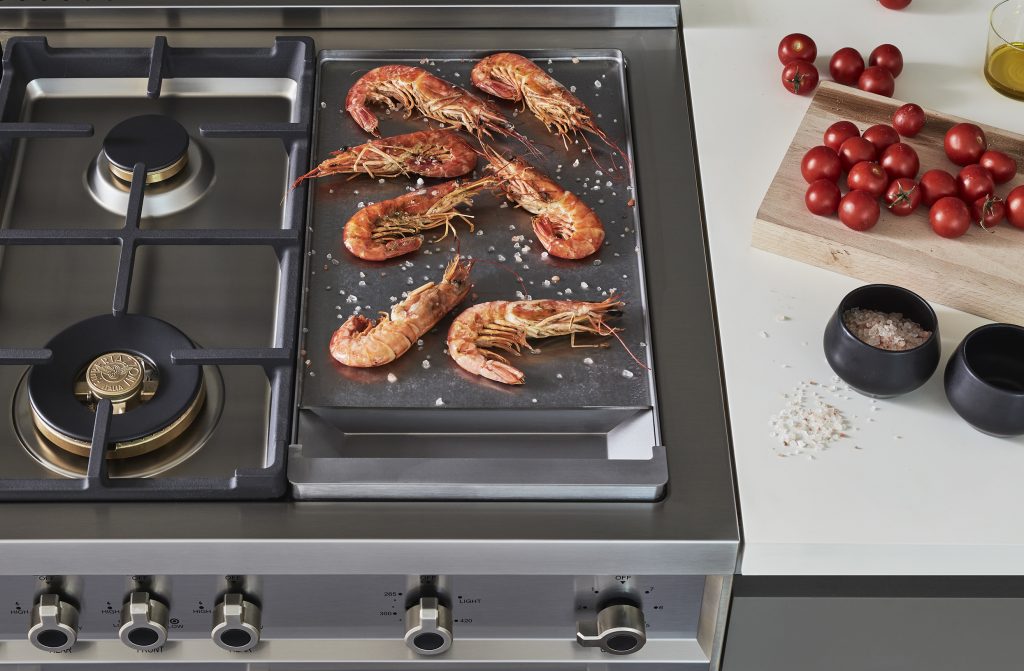
Is that really such a big deal?
Well, yes, it is, because using the right size of pot or pan for the task at hand is really important!That may seem pretty basic and obvious, but it’s a fundamental rule that can make a difference to a dish with under or over-cooked bits and a perfectly prepared one.
For example, when gently frying gnocchi you’ve lovingly made (as in this great recipe for gnocchi and tomato sauce ) you don’t want to overcrowd them in the pan. You not only want them to be cooked evenly, you also want that tomato sauce to coat each and every one of them!
Obviously, using a big pot on a burner that’s too small for it won’t result in even cooking. Nor will setting a small pot down on a burner that’s too large for it: If flames are flicking up around the sides of the pot, you’re just wasting energy and heating up your kitchen needlessly. So it’s not a small thing that the burners on Bertazzoni gas ranges accommodate a good variety of pot sizes.
They also provide a spacious, stable working surface, so you can have a number of large pots on the go simultaneously. When it’s time to make that big, multi-course holiday meal friends and family look forward to every year, that’s something cooks are endlessly thankful for!
Obviously, using a big pot on a burner that’s too small for it won’t result in even cooking. Nor will setting a small pot down on a burner that’s too large for it: If flames are flicking up around the sides of the pot, you’re just wasting energy and heating up your kitchen needlessly. So it’s not a small thing that the burners on Bertazzoni gas ranges accommodate a good variety of pot sizes.
They also provide a spacious, stable working surface, so you can have a number of large pots on the go simultaneously. When it’s time to make that big, multi-course holiday meal friends and family look forward to every year, that’s something cooks are endlessly thankful for!
Another burning (sorry!) matter.
Control is also a matter of how exactly heat is applied to your cookware. Bertazzoni’s sealed high-performance power burners are designed to direct gas flames precisely: they are raised to provided optimum contact, and even the burner tines themselves are shaped to focus flames at the bottom of your pots and pans.But . . . hang on, what about BTUs*?
BTU numbers have been climbing in recent years. Does a higher BTU make a specific difference? What difference, for instance, will you see between a gas range with a maximum of 15,000 BTUs and one with 25,000 BTUs?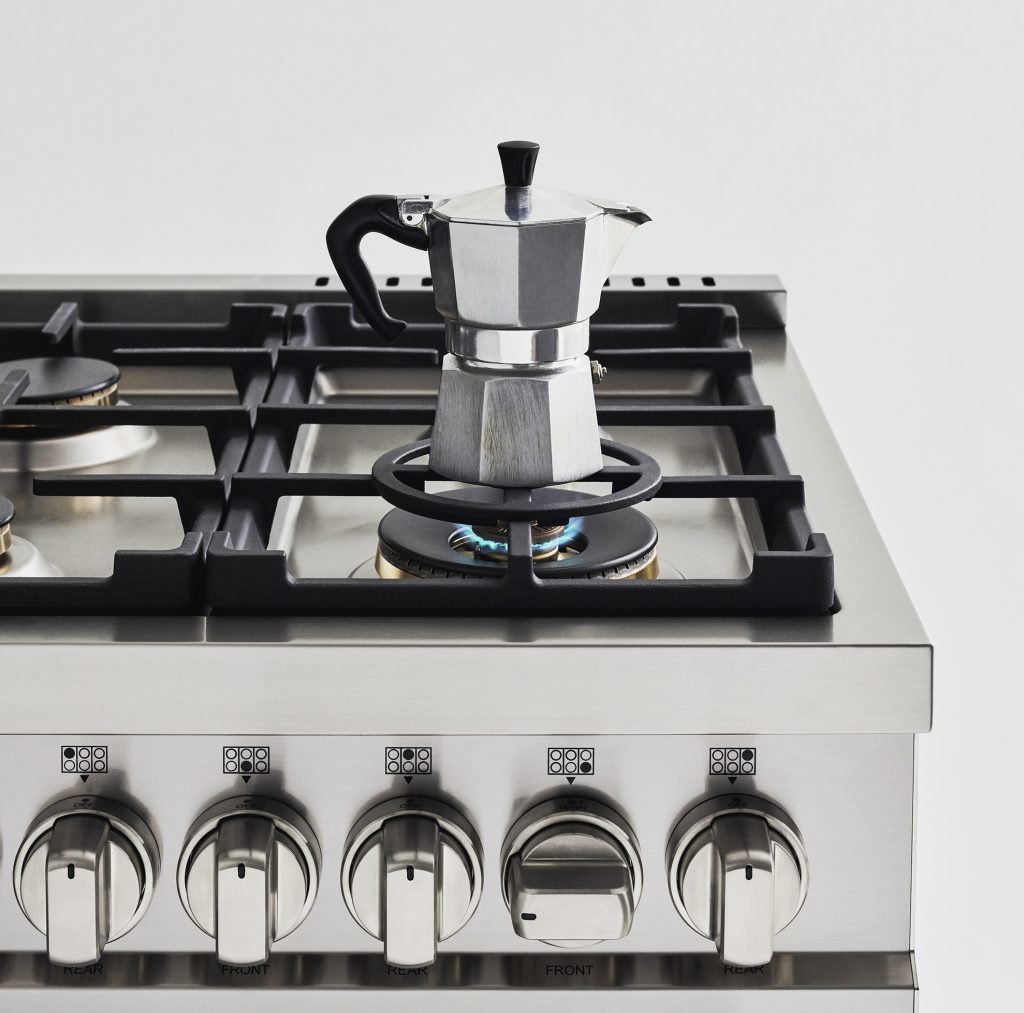
Well, the latter one will get a pot of water for your pasta boiling slightly more quickly than former. That’s no small thing when you’re really hungry for pasta, for sure! In that sense, Bertazzoni’s 19,000 BTU brass power-burner, which boils water in under 6 minutes, will not go unappreciated!
The thing is, the ability to suddenly blast a pot with high heat isn’t the ultimate gold standard for gas range performance. Even when you’re searing meat, you don’t want to go too far! Seared does not mean burned, right? Again, it’s all about control!
It’s really the control and precision that Bertazzoni burners offer and their really generous functional work surfaces that win the day when you cook with them. All that said, their good looks don’t hurt either, of course!
The thing is, the ability to suddenly blast a pot with high heat isn’t the ultimate gold standard for gas range performance. Even when you’re searing meat, you don’t want to go too far! Seared does not mean burned, right? Again, it’s all about control!
It’s really the control and precision that Bertazzoni burners offer and their really generous functional work surfaces that win the day when you cook with them. All that said, their good looks don’t hurt either, of course!
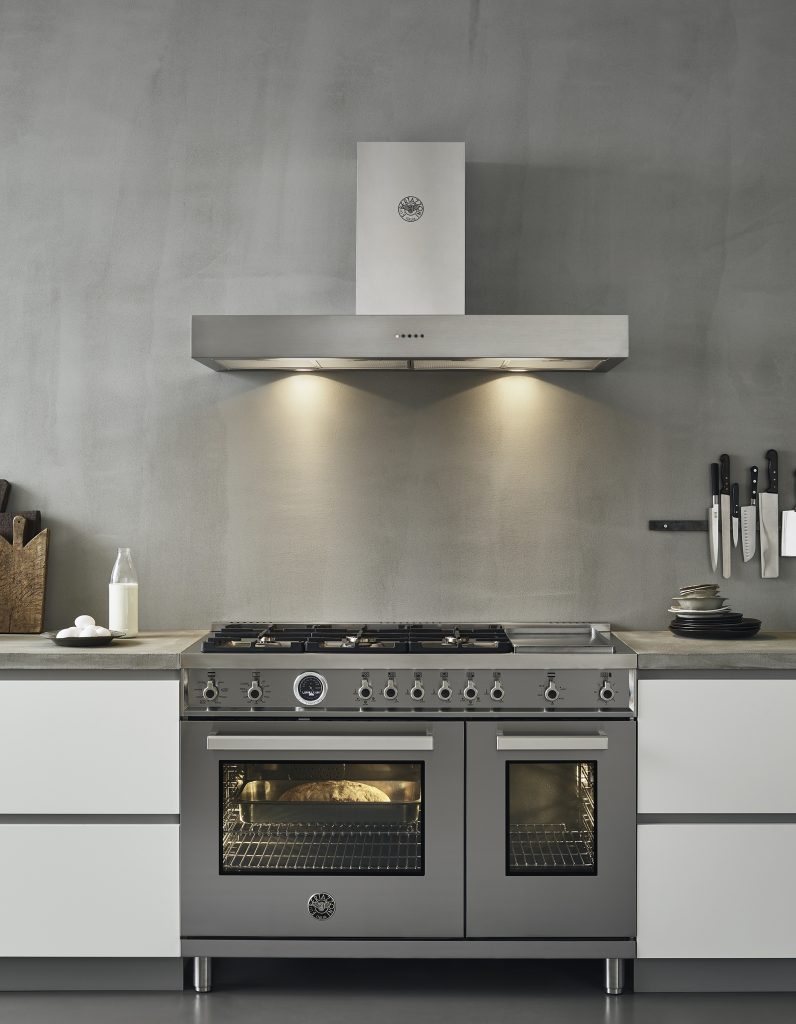
All’s well that ends well.
Finally, as much as we might relish preparing and consuming great food, cleaning up is important, too, whether we like it or not! Bertazzoni gas ranges show admirably down-to-earth value here. Their spill prevention barriers keep things in control while cooking is underway, and since they’re made from one single piece of stainless steel, they don’t have any tricky, hard to clean seams or cracks that would make cleaning up a headache.And, now, to make up for bringing up the topic of kitchen clean ups, which are probably far from being anyone’s favourite activity, let’s end on a sweet note: Check out this classic Italian apricot jam. It’s just another example of how a good old controlled slow-simmer on a great range can produce utter deliciousness!
* BTU stands for British Thermal Unit. One BTU is the amount of power needed to raise the temperature of one pound of water by one degree Fahrenheit.

